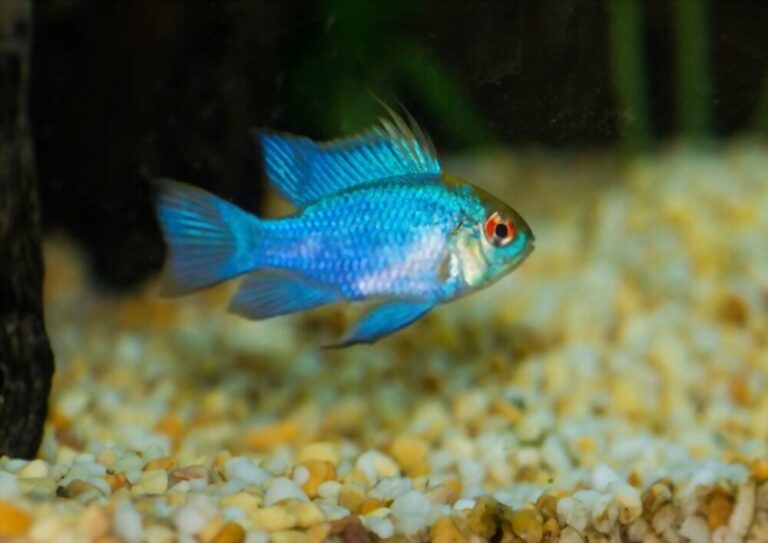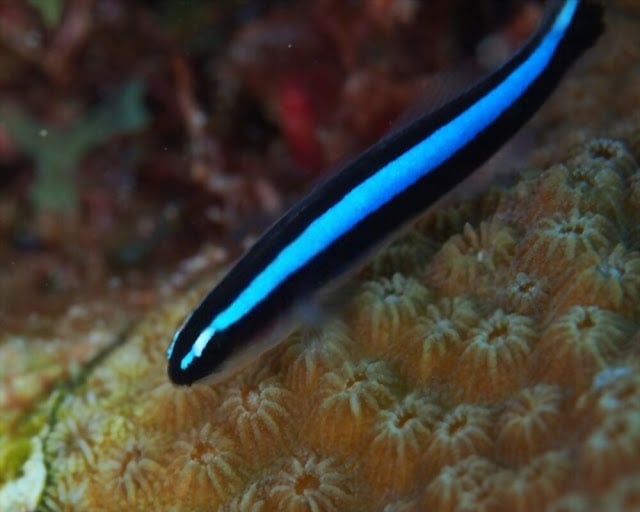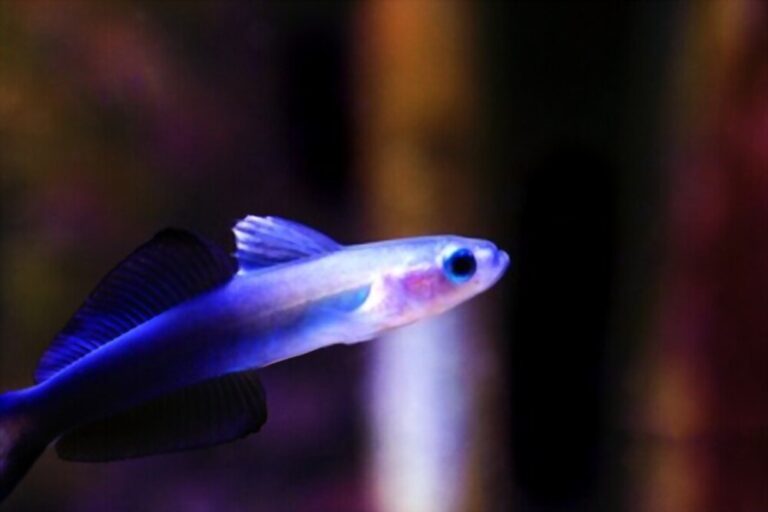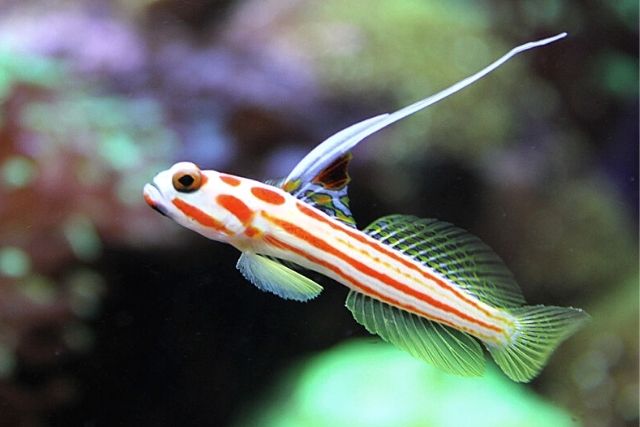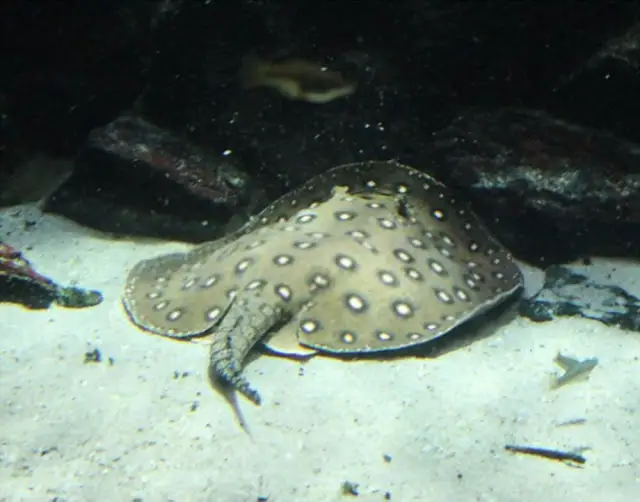Lionfish (Care, Size, Lifespan, Tank Mates, Habitat, Diet)
Lionfish is a diverse group of spinous fishes belonging to the genus Pterois in a taxonomic hierarchy. These fishes are characterized by the presence of long venomous spines for defense from potential predators.
They are also very popular in the aquarium trade and are kept by enthusiasts all over the world.
Lionfish Size
The size of any particular lionfish species is dependent on what genus it belongs to. They are classified into two groups that we have discussed previously, and this classification is pretty much proper to classify based on their body size.

Common lionfish varieties belong to the genus Pterois ranging from a little more than 7 inches to 15 inches in length.
The longest lionfish have ever been measured was 19 inches long, and it was none other than Red lionfish or Pterois volitans. It usually stands at 12-15 inches.
There are six recognized species in the genus Dendrochirus of lionfishes, and their size is approximately half of the common generalized size of lionfish.
The maximum size among dwarf lionfishes is Zebra turkeyfish and it stands dominant at a maximum of 9 and a half inches.
Usually, the other dwarf lionfish species are 5 to 6 inches long. Hawaiian turkeyfish or Pterois sphex is too small to compete with Dendrochirus lionfishes in terms of size and it is also regarded as one of the dwarfs.
Lionfish Species
In the right place (Indo-pacific), the lionfish, without any doubt, are one of the most graceful reef inhabitants with their eye-catching, slow and gracious buoyancy over the surface of reefs.
While we are talking about their graciousness. Let us not forget that it is not just a single fish species. Instead, it is a group of fish that consists of 17 species.
12 out of these 17 belong to the genus Pterois. They are regarded as true lionfish. 5 species belong to the genus Dendrochirus. They are what we commonly know as dwarf lionfishes as they are almost half the size compared to the common lionfish.
List Of Lionfish Of The Genus Pterois
| Scientific name | Common name |
| Pterois cincta | Red sea lionfish. (Endemic to the shallow water reefs of Red sea) |
| Pterois lunulata | Luna lionfish |
| Pterois antennata | Spot-fin lionfish, Turkey fish |
| Pterois brevipectoralis | No specific common and not is much known about this particular lionfish |
| Pterois volitans | Red lionfish (most studied and well-known lionfish in genus Pterois) |
| Pterois sphex | Hawaiian turkeyfish, Hawaiian lionfish (It is considered as dwarf lionfish due to its size smaller than the common lionfishes) |
| Pterois russelii | Plaintail turkeyfish, Russell’s lionfish, Soldier lionfish. |
| Pterois paucispinula | It is the newest member of the lionfish and is very identical to the Mombasa lionfish. It does not have any common name yet and many consider this as a sub-species of Mombasa lionfish |
| Pterois mombasae | African lionfish, Frill-fin Turkeyfish. |
| Pterois radiate | Clear-fin lionfish, Radial firefish, Tailbar lionfish. |
| Pterois miles | Devil firefish (Closely related to volitan or red lionfish. These two species are true invaders in Atlantic waters) |
| Pterois andover | Andover lionfish |
List Of Lionfish Of The genus Dendrochirus
| Scientific name | Common name |
| Dendrochirus biocellatus | Twospot turkeyfish, Ocellated lionfish. |
| Dendrochirus brachypterus | Shortfin turkeyfish |
| Dendrochirus bellus | Bricked Firefish |
| Dendrochirus barberi | Hawaiian dwarf lionfish |
| Dendrochirus taumotuensis | Tumotu’s dwarf lionfish (Considered as the newest addition to the genus and not much is known about it) |
| Dendrochirus zebra | Zebra turkeyfish |
Lionfish Habitat
They are tropical fish and are native to the Indo-pacific waters.
Their main geographical distribution is centered in the Southern Pacific ocean and subcontinental region of the Indian Ocean. Which further extends up to Malaysia, Thailand, Japan, Australia, New Zealand, French Polynesia, and the Pitcairn Islands of the United Kingdom.
They inhabit a wide range of depths and occupy the ocean floor. These slow-moving predators are nocturnal, which means naturally they are active at night during sleep during the day.
They find shelter on any surface available to them along the bottom, coral reefs, seagrass, mangrove, or shipwrecks. 1 to 300 feet is the generalized range of depth that these guys are known to inhabit.
That was a brief description of their native range of habitat. However, these fish have now been established along the southeastern coast of the United States of America, New York, and Bermuda.
This is their non-native range and the first lionfish to be ever caught in the Atlantic Ocean was in 1985 in the waters of Florida. There are several speculations regarding this new home of them.
Many believe that these fish were intentionally released in Atlantic waters and others blame the ships. In these non-native waters, they have already multiplied exponentially and imposed significant threats on many marine lives.
Not only this, but they also have changed their sleeping patterns and are found roaming around with their bellies full even during the day times.
Appearance
Lionfish is a group of fascinating yet scary fishes thanks to their erect end elongated tentacles projecting out of their body with a reddish hue making them somewhat zombies. But there is nothing to worry about it at all.
These fish might look like ruthless ambush predators that tear down everything in their path. But, the reality happens to be contradictory. It would be best if you had an eye of a hobbyist to behold their sight.
The most prominent feature of their appearance is the presence of spines or tentacles. These massive tentacles originate from above their eyes and below the lower jaw.
Their eye-catching coloration with peculiar white, brown, reddish-brown stripes or patches along their head, body, and spines is just marvelous. Their spectacular colors, together with these spines, separate them from the conventional or typical-looking fishes.
Commonly, they usually have 13 dorsal spines, two short pelvic spines, and three spines near the anal fin. These spines are venomous and contain proteinaceous venom, which causes severe pain and allergic reactions in humans if they get stung.
Their fins are fan-like and consist of soft rays. In the Atlantic, their fin ray’s peculiar movements help them in predation as the local populations of small fishes are not aware of these predatory tactics.
Behavior
Lionfish are aggressive towards smaller species of fish and other invertebrates. They are not the fish for community tanks.
They are not too aggressive to be maintained in the species-specific tank. Instead, they are good to go with fishes of the same or larger size and the same temperament.
The venomous spines on their body are more of defensive organs. In the wild, many bloodthirsty predators that could have been potential predators of these fish avoid them because of these venomous spines.
They are also known to be territorial. The males are known to defend their established territories from other fishes and other males of the same species.
Females are less aggressive than males. They also have an instinctive tendency to see smaller lionfish as food.
For those who want to maintain multiple lionfishes in the aquarium. Go ahead! You can, but make sure all the lionfishes you bring home are fully grown, or all of them are juveniles.
Introducing juveniles in the tank of mature lionfish will result in the eradication of the juveniles.
Lionfish Care
Although you can not keep these fish in community saltwater aquariums for their aggressive predatory nature. They certainly make up for the beautiful addition in semi-aggressive tanks.
They are quite hardy and require a moderate level of aquarium care. Lionfish can quickly get acclimated and adapt well to the surroundings provided that the tank has taken care of all the things required for them to perform well.
They produce a significant amount of bio-load and can quickly pollute the water. Saltwater aquariums are challenging to handle anyway and require timely and remarkable caring measures to maintain conditions.
Temperature & Tank Condition
Efficient filtration setup and regular water replacements are inevitable for the lionfish tank. Experts suggest 20% of the water changes every two weeks or 10% weekly or as needed.
Alongside keeping a strict check on water conditions, maintaining enough space with a proper setup to make them feel at home is of prime importance. Bulleted below are primary water conditions for their aquarium.
- They are warm water fish and thrive in temperatures ranging from 72 to 78 degrees Fahrenheit. The upper extreme of this temperature range or a little higher than this is suitable for them to spawn and breed.
- You should strictly maintain the pH within a narrow range of 8.1-8.4.
- Carbonate hardness and specific gravity are best maintained at 8-12 and 1.025 to 1.025, respectively.
Lionfish Diet
They are carnivores, and that is quite obvious. But what we do need to know before coming to the point that what and how exactly they should be fed in the home aquarium depends on their mode of hunting and feeding preferences in the wild.
How Often To Feed Fish & How Much? A Proper Fish Feeding Guide
Lionfish eat almost everything, which is of their compatible eating size. Their compatible eating size varies, and this variation is dependent upon the creature being fed. They are even known to eat prey that is double the size they are.
They can also eradicate the population of smaller reef inhabitants, which is why they are known to be invasive fish in non-native regions as in Atlantic waters.
What Do Lionfish Eat In Captivity?
As far as feeding lionfish in captivity is concerned, they are quite challenging to be fed and require adequate knowledge and research from their owner in terms of feeding.
If you have got lionfish in your aquarium and are ready to take care of them for the long term, then what I will write next is precisely what you need to know.
They are not only meat-eaters. They are invasive predators, which might be why you can face food rejection of food ignorance while trying to feed them frozen food. You may be left with the only available option, which is to feed them the live food every time.
I believe you cannot always do that. There is an easy way out, and it works if done correctly. Try feeding your lionfish frozen food with the help of a tweezer. By shaking or wiggling the tweezer, they might take it for the live food and ambush it and do it more often.
By doing so, you can train your fish to this type of feeding. Eventually, you may not need the tweezer anymore once the fish get used to taking the frozen food.
Feeding them once every day is just fine. The best foods for lionfish include frozen Silversides, krill squids, ghost shrimp, and fiddler crabs. Feeding them small fishes like mollies, guppies, and cardinalfish occasionally will bring out their instinct.
Lionfish Tank Size
The tank size for the lionfish directly relates to the species. Different species of them attain different sizes and thus have different requirements for the tank size.
However, all the species share one thing in common. The need for a spacious tank. The average tank size for the dwarf varieties is 55-60 gallons. While for common species like Red lionfish, 120-130 gallons is the suitable tank size.
They are not active swimmers, but the need for a room aquarium is their instinctive demand. Not only this, but the small aquarium with limited space may fail miserably against the huge amount of bio-load that these fish produce, possibly costing you your unique acquisition.
Lionfish Tank Set up
It is essential to set up the lionfish tank correctly because the tank setup determines that your valuable acquisition needs are being fulfilled.
As we already know that they are not great swimmers and spend most of their time floating or sitting along the bottom. For that, you must have to provide your tank with plenty of rocky formation to get your fish a sufficient amount of crevices.
The hiding places are most important for their acclimation as well. Naturally, they are seen inhabiting the reefs. Still, I will not recommend putting them in the reef aquarium as it may get a lot of difficulty for you to handle the amount of bio-load in the reef aquarium.
Moreover, a good and efficient filtration setup is of prime importance for the lionfish tank. I would recommend decent size skimmer as your primary filter for efficient mechanical filtration.
But for the nutrients that settle down and can trigger algae growth, water filtration is mandatory. You may also want some powerheads in addition to the primary filter.
Powerheads are used to move the debris, making it easier for the filter to catch the large particles. All the light that you are to keep the aquarium lit enough to be viewed easily.
Lionfish Tank Mates
After all the detailed discussion about lionfish behavior, feeding preferences, and tank requirements. It is quite obvious that these apex predators are not community fish.
Instead, they are the fish for semi-aggressive tanks. Only those species of fish can withstand the presence of lionfish around them, which are large enough not to be mistaken for the food of lionfish and have a similar type of temperament.
Given below are the few compatible tank mates for your lionfish. Let us take a brief overview of them.
- Threadfin Butterflyfish: They are not as aggressive as lionfish, but they make good tank mates with them.
- Saltwater Angelfish: They are somewhat territorial and semi-aggressive. Perfect for lionfish tank.
- Blue Tang: They are vegetarian and have a peaceful temperament towards other species.
- Maroon Clownfish: They are highly aggressive but get along with lionfish. They should be added to the tank at last.
- Harlequin Tuskfish: They make good tankmates with the lionfish. They are not very much aggressive but can grow very large.
- Pantherfish: They are predatory fish and get along well with them.
- Clown Triggerfish: Highly aggressive in the tank but do not bother lionfish as long as they are not in its territory.
- Snowflake Moray Eel: They are also nocturnal, Semi aggressive, and predatory fish. Get along well with the lionfish.
Final Words
Other common names by which the lionfish are known as firefish, turkey fish, tasty fish, and butterfly-cod. Because of the banded zebra-like pattern on their bodies, they are also commonly known as zebrafish.
There are many species under the genus Pterois. But the most widely known and the most researched species of this genus is Pterois volitans.
It is not only popular in the aquarium but is also well-reputed for its deliciousness. It is venomous but is not poisonous. So it can be eaten without having its specific body part removed, just as we do with puffers.

